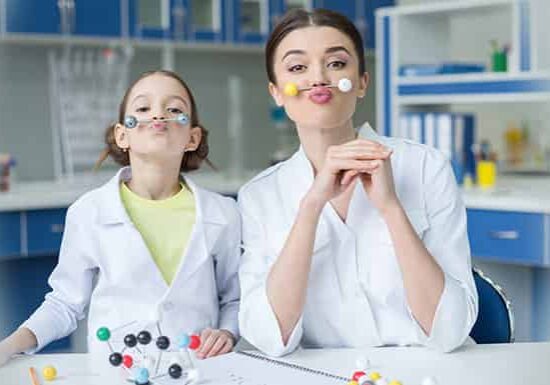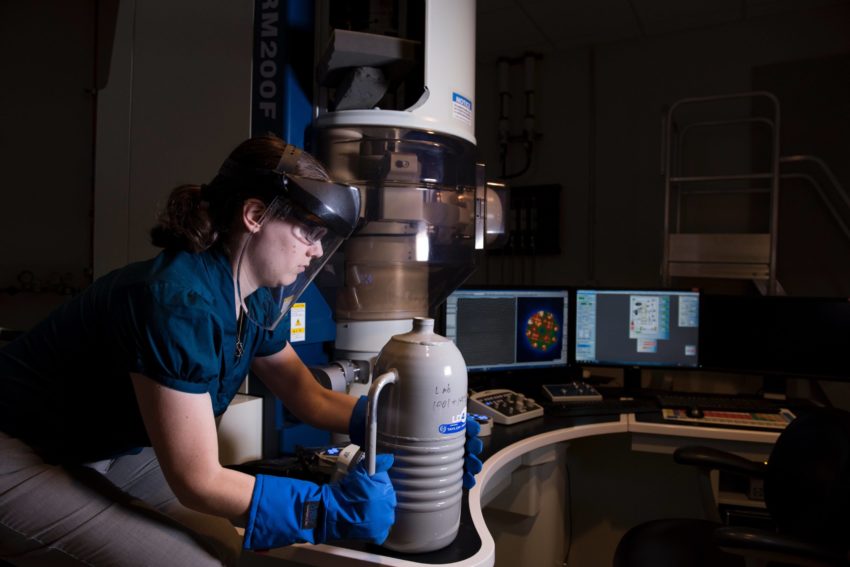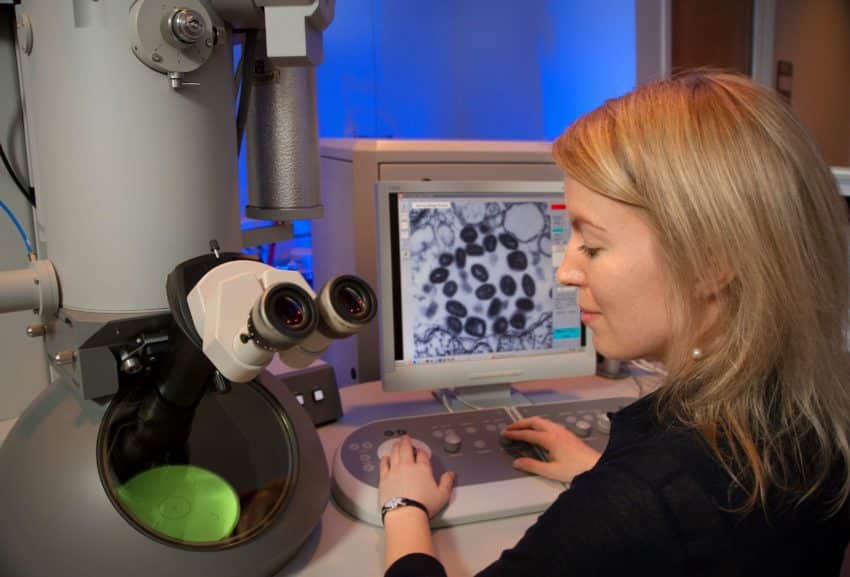International Day of Women and Girls in Science: It’s a New Era
Updated: June 19, 2024
Published: February 11, 2020

In the month of February, there is one special day that really celebrates women. No, we aren’t talking about Valentine’s Day! The International Day of Women and Girls in Science takes place on February 11 every year. It’s a great day to recognize important women in science and inspire women around the world to get involved in the field.
What is the International Day of Women and Girls in Science?
Most people would agree that the world still has a lot of work to do to achieve gender equality. This is especially true in education around the world.
When it comes to STEM (science, technology, engineering, and math), women have been disproportionately underrepresented throughout history.
That’s why the General Assembly established this international day. Together, the United Nations- Women and UNESCO make February 11 a day to be celebrated and remembered for women in science.
One of the main challenges on the agenda is Sustainable Development. To achieve this goal and overcome the challenges of climate change, the world needs more women in science and engineering to help find solutions!
What the Stats Say: According to the UN
Even if one were to argue that women are equal to men in science and engineering, the facts simply don’t support the claim. According to UNESCO stats, here are some powerful insights into why the work towards gender equality in the STEM fields must be a priority:
- There have been 572 male Nobel Prize winners in physics, chemistry, or medicine since Marie Curie in 1903. Only 17 women have won this title.
- Only 28% of global researchers are women.
- In the US, 39% of women take part in advanced courses in physics and math, compared to 61% of men.
- That gap is even larger in Portugal, where it is 25:75, women:men.
- On a global average, when it comes to higher education in engineering and construction, the ratio of women to men is 27:73.
- Only 11% of women worldwide are enrolled in higher education in natural sciences, mathematics, and statistics (on average).
- At 15 years old, 22% of women and 48% of men have expectations to work in a science-related career.
- The gender gap in the science and math fields grows larger as education increases (i.e., from bachelor’s to doctorate students to becoming researchers).
Investment in Women and Girls in Science for Inclusive Green Growth
It becomes clear that the gender gap begins with education. While men are often pushed to study and expected to be better at math and science than women, women are less likely to enter the field.
However, women are equally capable at succeeding in math and science. The narrative just hasn’t been written in their favor historically.
This investment in women in science and engineering comes at a time when it’s much needed to solve global issues. The theme this year is, “Investment in Women and Girls in Science for Inclusive Green Growth.”
The UN’s resolution serves as an important step to promote women entering the field and raise awareness of this bias that exists.

Photo by Science in HD on Unsplash
The Contribution
The resolution was adopted in 2015 and states the following main goals and information:
1. Goal to End Bias:
The UN Secretary General Antonio Guterres said, “I urge commitment to end bias, investments in science, technology, engineering, and math education for all women….”
2. Attract and Retain More Women in Science:
Women have a pivotal part to play in developing sustainable development policies and to be key decision-makers. They cannot be left out of science and engineering anywhere in the world.
3. Starts with STEM Education:
The participation of women in the fields begins with education in STEM at all levels. Curriculums should reflect equal opportunity and involvement.
4. Observing the Day:
The International Day of Women and Girls in Science is to be celebrated every year on February 11.
Important Women in Science
There are so many women in science that have made important contributions and world-changing findings. However, they often go unnoticed or overshadowed by men.
Let’s take a look at some of the most pivotal women in the field because they mean so much to the world!
1. Mary the Jewess (1st-3rd century AD):
Mary wrote some of the first books on alchemy, or the art of turning metals to gold. She is credited for finding hydrochloric acid. The kitchen tool bain-marie is also named after her.
2. Emilie du Châtelet (1706-1749):
At 27 years old, Gabrielle-Émilie Le Tonnelier de Breteuil started to study math and physics very seriously. Her biggest contribution to the field was when she translated Isaac Newton’s Principia. Unfortunately, she died at the young age of 43 before she could contribute more.
3. Caroline Herschel (1750-1848):
Inspired by her brother’s change of career into astronomy, Caroline followed suit. She made discoveries of nebulae and new star clusters. Her biggest claim to fame was being the first woman to discover a comet (she actually discovered 8 of them)! She was also the first woman to be published by the Royal Society (and be paid for her work). Before she passed away at 97, she had earned medals in the field, including a gold medal from the Royal Astronomical Society.
4. Mary Anning (1799-1847):
At the young age of 11, Mary uncovered fossils of a “fish-lizard.” Her career of fossil hunting began then and evolved into her contribution of finding fossils that helped scientists illustrate marine animals from the Jurrasic period. She was self-taught in geology, paleontology, and anatomy.
5. Mary Somerville (1780-1872):
Mary had a passion for algebra and math. Against her father’s wishes, she studied the subject. After marrying her husband who supported her love for math, she began to host an intellectual circle. She created experiments and wrote her findings, and eventually translated Pierre-Simon Laplace’s The Mechanism of the Heavens into English. This work was then used as a textbook for the next century.
6. Maria Mitchell (1818-1889):
Working with her father from a young age, Maria was intrigued by astronomy. When she was only 17, she opened her own school to teach science and math to girls. In 1847, she discovered a comet while looking in her telescope. She was then the first woman to be elected into the American Academy of Arts and Sciences.
7. Elizabeth Garrett Anderson (1836-1917):
As a British physician, Elizabeth did more than serve her patients. She was an advocate for women to be admitted into institutes for education, especially medicine. She was the first Englishwoman to become a doctor, obtaining her degree from the University of Paris. Thereafter, she founded the New Hospital for Women in London.
8. Lise Meitner (1878-1968):
In Austria during this time, all women were excluded from higher education. However, this didn’t stop Lise. At age 21, women were finally allowed to study at this level and she jumped right into learning about radioactivity. In 1906, she earned her doctorate. After facing many battles because she was an Austrian Jewish woman who had to flee from the Nazis, her contribution to science was massive, but also under noticed. She helped to discover and name the phenomenon of “nuclear fission,” which helped create the atomic bomb.
9. Irène Curie-Joliot (1897-1956):
Together with her parents and then her husband, Irene worked in labs to understand the structure of an atom. Her husband, Frederic, and she won the Nobel Prize together in 1935 in chemistry the year after they discovered artificial radioactivity.
10. Barbara McClintock (1902-1992):
In the 1920s, Barbara studied genetics at Cornell University. She pioneered the study of corn cells and continued her post-doctoral research around America. She was later awarded the Nobel Prize and Lasker Prize for her discovery of “jumping genes,” which at the time no one believed was the truth.
11. Dorothy Hodgkin (1910-1994):
As one of only two girls allowed to study chemistry with boys in England, Dorothy eventually enrolled in Oxford and then Cambridge. She spent her life devoted to studying X-ray crystallography and was awarded the Nobel Prize in 1934. Her work was used to understand the structures of penicillin, insulin, and vitamin B12. In 2010, she was the only woman to be honored by the British Royal Mail when she was part of a stamp collection for the 350th anniversary of the Royal Society.
12. Grace Hopper (1906-1992):
Grace was the first woman to receive a PhD in mathematics. She joined the US Naval Reserves and then went to Harvard to learn the first computing program. She invented the term “debugging” when resolving an issue with computers. Her goal was to make computing accessible to the public, so she developed COBOL, a coding language in English rather than binary code. She won many awards, including the first Computer Science Man of the Year Award.
13. Rosalind Franklin (1920-1958):
Against her father’s will, Rosalind Franklin was determined to study science. She enrolled in Cambridge University where she earned a doctorate in physical chemistry. She created X-rays of DNA and her work was pivotal for Watson and Crick’s discovery of DNA’s double helix structure. The pair won the Nobel Prize, but unfortunately, Franklin had already passed away from ovarian cancer.
14. Jane Goodall (1934-):
Jane is a British ethologist that has dramatically transformed people’s perception of wildlife preservation. She lived amongst chimpanzees in Africa where she documented and shared her findings. Despite lacking a degree, she accomplished a PhD and established the Gombe Stream Research Centre. She’s published many books and created the research establishment in her namesake — the Jane Goodall Institute for Wildlife Research, Education and Conservation.
15. Valentina Tereshkova (1937-):
Valentina was the first woman in space! At the time, she was only 26 years old, which still is the record for the youngest woman and first civilian in space.
It goes without saying that these women have all performed amazing feats that have truly changed the way we live, survive, and understand the ins and outs of our bodies and world.

Photo by CDC on Unsplash
Female Scientist Quotes
If the stories above are not enough inspiration, then here’s a few more final motivational words in the form of female scientists quotes:
“If you know you are on the right track, if you have this inner knowledge, then nobody can turn you off… no matter what they say.” — Barbara McClintock
“Don’t be afraid of hard work. Nothing worthwhile comes easily. Don’t let others discourage you or tell you that you can’t do it. In my day I was told women didn’t go into chemistry. I saw no reason why we couldn’t.” -Gertrude Elion
“Science, for me, gives a partial explanation for life. In so far as it goes, it is based on fact, experience, and experiment.” – Rosalind Franklin
“Don’t let anyone rob you of your imagination, your creativity, or your curiosity.” — Mae Jemison
“With men you’re expected to do well and get the support, but for females, you have to sacrifice something in a different way from men… I think it’s very important for other women to see that I have had success.”— May-Britt Moser
The Bottom Line
Any person in the world has a right to education and the capacity to study what they want. The International Day of Women and Girls in Science exists to continue to support women and girls in STEM. There’s a long history of females who have made powerful contributions in the field, and a new era is upon us to increasingly support women in science.
University of the People is fully supportive of this mission and continues to offer tuition-free education for women and men around the world. The University has broken barriers in terms of offering affordable and accessible education globally through its online model of education. Students from over 200 countries and territories have attended to pursue their higher education degree.
Whether our students wish to pursue a career in science or Business Administration or Education, we offer a multitude of flexible programs. If you’re interested in getting involved in Computer Science or Health Science and want to earn your degree, check out the University of the People’s 100% online and tuition-free programs!
Don’t forget — on February 11, take part in an activity or many and commit to ensuring that women and girls are heard and supported when it comes to studying science, technology, engineering, and mathematics.
